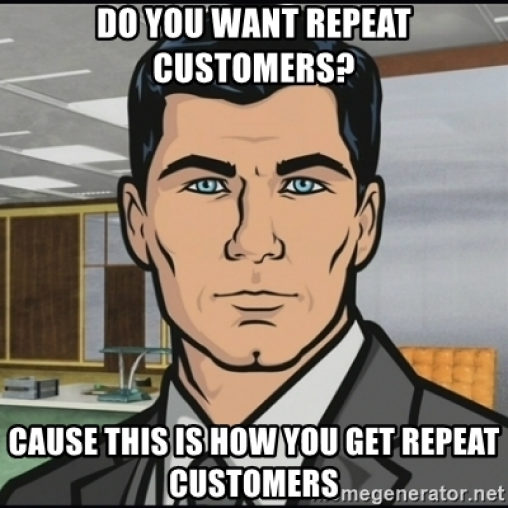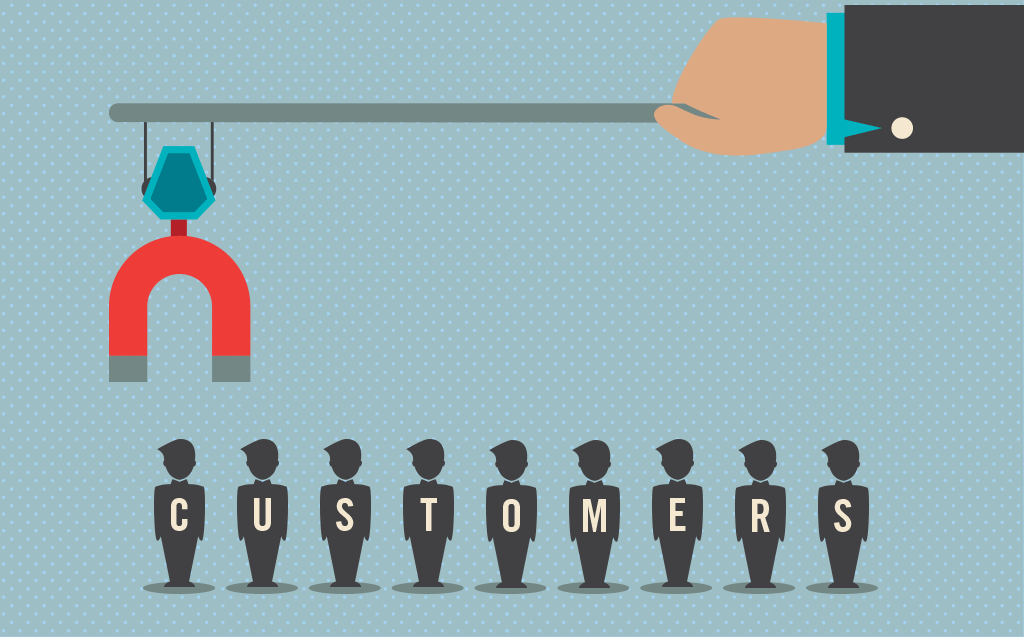If your company has an online store that sells goods or services, you may be willing to scale your online business, sell more with a mobile app or get some guidance on the best eCommerce strategies to help you reach more customers. Customers in the B2C and B2B businesses want integrated, unified buying experiences. This means customers demand smooth transitions across platforms and sites, mobile apps as well as individualized engagements based on previous engagements with a business. The vast majority of consumers (70%) believe that these interconnected procedures are critical to learning because of the competitive e-commerce market.

What Is An E-commerce Strategy
An e-commerce strategy is the set of techniques you intend to employ to advertise your online business and increase sales. Strategic development is a long-term plan for your online firm. It is based on your market understanding, trends, consumer insights, brand image, and the products you offer.
To engage today‟s competitive buyers, businesses must integrate their experience through all the emotional touchpoints. Customers desire and expect seamless shopping experiences from browsing to delivery and everything in between. Integrated experiences may also help organizations understand customer behavior and how it relates to store inventory, items, and promotions.
Given how quickly the e-commerce industry is evolving, having some new growth techniques on hand might be beneficial. In this post, I'll outline 12 techniques for revitalizing your online business, engaging your consumers, and increasing profits.

1. Convert first-time customers into recurring customers
Getting your first client sale might be difficult. With several online merchants and product recommendations to choose from, customers are better educated than ever. And, while making your first sale is an exciting sensation, don't take things for granted. Take advantage of this chance to convert that consumer into a recurring buyer. One method is to send a "Thanks" email after the transaction.

2. Let your customer find you
SEO and content marketing may assist your customers in finding you and making decisions. When 88 percent of consumers perform research online before making a purchase, and most queries do not make it past page one (with a growing proportion of zero-click), SEO is another eCommerce marketing tactic that marketers cannot afford to overlook. Again, SEO is a broad topic that could potentially fill its very own blog, so here are a few instances that are especially appropriate to eCommerce development.
-
The Blog- Even if you fully optimize all of your retail sites for their targeted keywords, there'll be numerous relevant search questions for which you want your company to rank. This is when a blog comes in handy. If your product pages are intended to rank for specific goods, your blog pages should be intended to answer queries regarding your item or industry.
-
Quizzes- As enjoyable as the feed might be, these aren't the kinds of quizzes we're talking about. Quizzes are the best alternative to inform customers about your products, give personalized solutions, and incentivize them to fill out a contact form.
-
Shop Listings- Listings have long been a feature of brick-and-mortar companies (Yelp, TripAdvisor, etc.), but they're now making their way into eCommerce. These listings provide free visibility and sales, but they, like SEO, use their regulatory regime and best practices that you can optimize to increase business rank and generate traffic.

3. Rewarded customer loyalty
A consumer will only visit your online marketplace so many times before moving on to other alternatives. You begin to create an interactive way for customers to buy from your business by recognizing their loyalty. Simply put, personalization is a tactic for making your consumers' purchasing experience more enjoyable and participatory. There are several choices for loyalty programs. Top valuable, for example, may gain VIP status and enjoy even more benefits, unique deals, and the first to things in your store before they become available to the general public.

4. Create a good distribution and fulfillment strategy
Though you begin easy and small, you should have a firm grasp on the distributing and order fulfillment needs that will emerge as your business expands. If you are packaging and delivering yourself, managing a small staff, or using a third-party fulfillment service, you must determine if your fulfillment procedures can match the requirements of your future marketing campaign.
After you've developed your ideas, spend some time revising, improving, and changing them over time.

5. Get technology and monitoring software
Before you embark on a major marketing campaign, you must first address the essential questions:
-
Is the tech I'm now employing to measure the efficacy of my marketing activities adequate?
-
Is it enough to see if the KPIs I'm attempting to improve are indeed getting better?
-
Will it assist our organization in effectively calculating the ROI of our activities?
If you answered "no," you must make changes before implementing a new e-commerce marketing plan. And if you answered "yes," that's fantastic! However, I would advise you to double-check.

Build An Engaging App For Free
6. Observe and Test
Set aside some of your e-commerce marketing money to experiment with different techniques. After all, you won't know what works and what doesn't unless you try it.
Don't waste money, but regardless of the size of your budget, performing some modest test scenarios in smaller marketplaces might give you the artillery you need to substantiate an increase in funding, confirm earlier suggestions, and open the door to an altogether new potential market.

7. Using automated email alerts, you may reclaim lost business
Sometimes all a consumer needs is a little prod to return to your online business. This may be made easier with automatic win-back promotional emails that are sent after a certain length of time. Winback emails may be extremely beneficial for brands that rely on monthly repeating transactions or give subscription boxes. If a client has been inactive for a while, you may smooth the pot by putting a 15-20% discount in your conversion communication. This might be just what they need to finish their transaction and remember your business.

8. Simplify your store's design
Quick, straightforward, and simple to use. If your online business fails to meet those three criteria, you'll need to consider simplifying your store layout. We understand that if a page takes more than 5 seconds to load, it reduces the probability of a consumer converting. So, how can you enhance the design?
-
Make use of a gentle shop design. Most Shopify themes will work, however, layouts from app developers will provide you with additional options.
-
Compress pictures and videos so that they are not too large. This will affect how quickly your website responds.
-
Make use of white space and avoid crowding places.
-
Make use of breadcrumb navigation. It's one of the most obvious methods to indicate to clients why they're on your website.
-
Improve your mobile experience. With mobile devices accounting for more than half of all e-commerce purchases, you can't afford to focus just on the desktop view.

9. Build a strong brand story and brand identity
It is vital, if not essential, that you have a compelling brand narrative. What is the distinction between such a brand message and a brand identity? Your brand's genesis story is its brand narrative. The brand identity is a collection of all of your brand's perks, qualities, and features. Develop graphical assets that reflect your brand's vision and mission once you've written down your brand's goal and purpose. Ensure that all of your promotional materials across all platforms are consistent and provide a clear vision of your brand.

10. Personalize your landing page
Personalization is a strategy that remembers what clients watched or explored during their previous session on your e-commerce site and generates fresh purchasing suggestions on each subsequent visit based on previous shop experience. This can be based on historical behavior, such as purchase history, or on real-time data, including location and time.
Amazon invented the user-centric buying experience. When you log in, the custom blocks in the first part under the "associated to products you've viewed" tag helps users easily discover the proper product.

11. Optimize your shopping cart
To minimize clients from abandoning their carts, make sure your shopping cart works properly and is simple to use. Analyzing performance regularly will help you understand your deficiencies. Analyze your statistics data to determine where clients usually drop off and develop ways to enhance them. Then, using A/B testing, identify which option has the best chance of reducing cart abandonment.

12. Improve social media & content
Social networks like Twitter, Instagram, Facebook, TikTok, and YouTube are often appropriate for an eCommerce marketing plan centered on product sales; nevertheless, don't ignore the strength of Facebook, which has over 2.89 billion monthly users worldwide.
There seems to be no one-size-fits-all approach, well here's a basic checklist of general criteria you may use to create the ideal client experience for people on social media:
-
Post regularly.
-
Make use of video.
-
Do not spam.
-
Consider using an automated tool to ensure that your postings are on schedule.
-
Even on Twitter, utilize photos wherever possible.
-
Engage with your consumers rather than just using social media for advertisements.
-
Track your audience's interaction via analytics.
-
Test a variety of social media methods before settling on one for your entire eCommerce marketing approach.
The eCommerce strategy guidelines we've provided are just a small portion of the options available to your company for reaching more clients online. Every step in this post illustrates a concept that may be turned into a working sale transaction. If you have an online e-commerce store and are looking forward to scaling your business using a mobile app. We recommend you Swipecart. Here you can create an app in just 5 simple steps and integrate all the latest marketing features and increase your sales like a pro!






